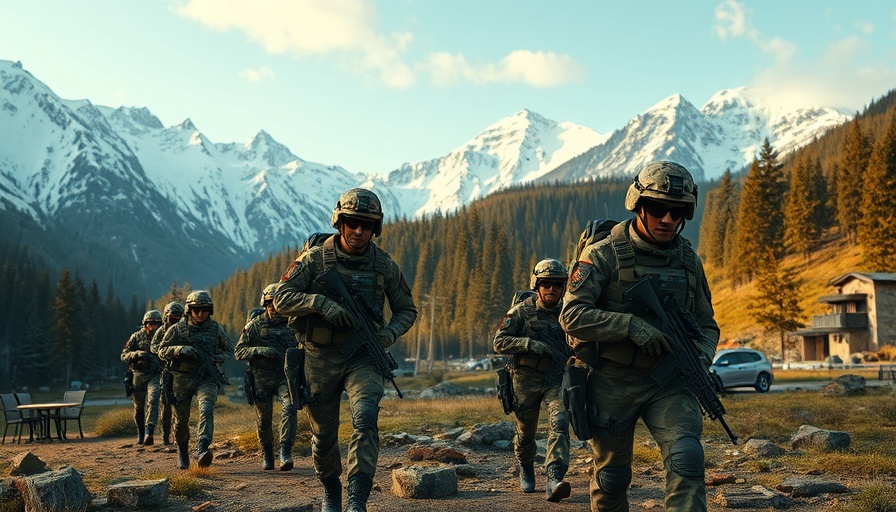
India and Pakistan Enter a New Chapter of Discord
As tensions rise between India and Pakistan, recent military actions have reignited a deeply rooted conflict that has spanned decades. On May 7, 2025, India engaged in missile strikes across the border into Pakistani territory, a response to an attack in Kashmir that left 26 Indian tourists dead. This violent incident has escalated relations between the two neighboring countries to new and alarming levels, as both sides engage in a cycle of blame.
Understanding the Historical Context
The hostilities between India and Pakistan can be traced back to their partition in 1947, a contentious split that created a mostly Hindu India and a Muslim-majority Pakistan. This division led to the first war over the princely state of Kashmir, a region with a complex demographic layout that continues to fuel conflicts today. Since then, the two nations have fought multiple wars, each conflict contributing further to their tumultuous relationship.
From the outset, Kashmir was destined to become a flashpoint. The U.N. brokered a ceasefire line in 1949 that leaves the region divided, yet the promised vote for its residents—a pivotal moment that could have offered a peaceful resolution—has never occurred. Thus, Kashmir remains a pivotal issue, embedded in national identities, fueling decades of distrust.
A Repeat of History: Recent Conflicts
Fast forward to the present, the militant activity within Kashmir continues to stoke tensions. The recent massacre of Indian tourists marked a grim reminder of the volatility in the region. Each conflict is characterized not only by military action but by a complicated narrative of accusations, with both nations alleging support for insurgent groups operating in Kashmir.
The current situation is underlined by military posturing, with diplomatic channels shuttered, and borders closed. The temperature of military engagements has produced exchanges of fire along the Line of Control (LoC), leading to casualties on both sides. With both countries blaming each other for igniting violence, it’s difficult to see a clear path to peace.
Parallel Examples of Conflict and Resolution
When examining global conflicts that have undergone periods of resolution, one might look at the historically fraught relationship between North and South Korea. Much like India and Pakistan, North and South Korea have experienced military skirmishes, divisions of ideology, and family separations across a turbulent border. However, instances of dialogue and peaceful negotiations have emerged in varying circumstances, showcasing that pathways to resolution, while complex, can exist.
Could there be lessons to be learned from such contexts? International diplomacy involves understanding historical grievances, creating dialogue, and building trust over time. While the current crisis appears daunting, it's essential not to lose sight of potential avenues for diplomacy.
Future Predictions: A Glimpse Ahead
The coming months may unfold in various directions. Historian and political analysts suggest that without impactful dialogue, the likelihood of military conflict could increase. However, transformations in leadership, regional cooperation, or international mediation could yet pivot the trajectory towards peace instead of further violence.
In addition, evolving public sentiment in both countries—especially among younger generations—may play a crucial role in demanding change. Emphasizing peace can create grassroots movements advocating for constructive international relations and mutual understanding.
Taking Action: Understanding the Value of This Knowledge
This complex backdrop of India and Pakistan's relations serves as a reminder of the broader implications for international stability. Understanding these tensions allows citizens globally to evaluate the intricacies of geopolitics, fostering more informed dialogues about peace and conflict.
Furthermore, civic engagement can lead to real change. Advocacy and understanding of these issues cultivate a community perspective, allowing for concerted efforts towards peace initiatives and humanitarian concerns.
Conclusion: The Importance of Awareness in Global Conflicts
Cognizance of the ongoing issues between India and Pakistan arms us with insight into global conflict and empowers citizens to foster dialogues for peace. In a world often rife with divisions, understanding historical legacies and engaging with contemporary conflicts may yet yield innovative solutions. Whether through advocacy, education, or grassroots movements, everyone has a role to play in shaping a more stable and peaceful future.
 Add Row
Add Row  Add
Add 




 Add Row
Add Row  Add
Add 

Write A Comment